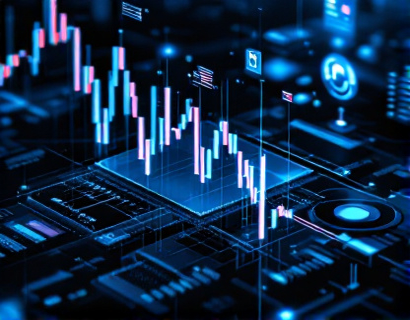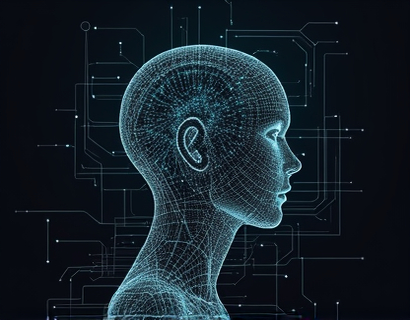Ethereum Layer 2: 2025 Insights - Mastering Scalability and Interoperability for Developers and Enthusiasts
The Ethereum blockchain has been a cornerstone of the decentralized finance (DeFi) movement, powering countless applications and smart contracts. However, as the demand for Ethereum's capabilities has surged, so too have the challenges associated with scalability and transaction costs. In response, Layer 2 solutions have emerged as a vital component of the Ethereum ecosystem, providing innovative ways to enhance performance and interoperability. This article delves into the latest insights on Ethereum Layer 2 solutions in 2025, offering essential information for developers and enthusiasts navigating this dynamic landscape.
Understanding Layer 2 Solutions
Layer 2 solutions are protocols built on top of the Ethereum blockchain (Layer 1) that aim to improve scalability and reduce transaction fees. By processing transactions off the main Ethereum chain, these solutions alleviate congestion and enhance the overall user experience. Layer 2 solutions can take various forms, including state channels, sidechains, and rollups, each with its unique advantages and use cases.
Types of Layer 2 Solutions
State Channels
State channels allow users to conduct transactions off-chain while only settling the final state on the Ethereum blockchain. This method significantly reduces the number of on-chain transactions, leading to lower fees and faster processing times. State channels are particularly useful for applications requiring frequent interactions, such as gaming and micropayments.
Sidechains
Sidechains are independent blockchains that run parallel to the Ethereum mainnet. They can have their consensus mechanisms and can be tailored for specific use cases. While sidechains offer flexibility and scalability, they may sacrifice some level of security compared to the Ethereum mainnet.
Rollups
Rollups are a popular Layer 2 solution that bundles multiple transactions into a single batch, which is then submitted to the Ethereum mainnet. This approach significantly reduces the amount of data that needs to be processed on-chain, leading to lower fees and faster transaction times. Rollups can be further categorized into Optimistic Rollups and Zero-Knowledge Rollups, each with distinct mechanisms for ensuring security and validity.
The Importance of Scalability
Scalability is a critical factor for the success of any blockchain network. As Ethereum continues to grow in popularity, the number of transactions has increased exponentially, leading to network congestion and high gas fees. Layer 2 solutions address these issues by enabling a higher throughput of transactions without compromising security. In 2025, the focus on scalability remains paramount as developers seek to create applications that can handle a growing user base without sacrificing performance.
Interoperability: Bridging the Gap
Interoperability refers to the ability of different blockchain networks to communicate and interact with one another. As the blockchain ecosystem expands, the need for seamless interaction between various platforms becomes increasingly important. Layer 2 solutions play a crucial role in enhancing interoperability by allowing different chains to connect and share data more efficiently. This capability is essential for developers looking to create cross-chain applications and services.
Key Layer 2 Projects in 2025
Several Layer 2 projects have gained traction in 2025, each contributing to the Ethereum ecosystem's scalability and interoperability. Here are some of the most notable ones:
Polygon (MATIC)
Polygon has emerged as one of the leading Layer 2 solutions, offering a suite of tools for developers to build scalable and user-friendly applications. Its multi-chain architecture allows for seamless interoperability between different blockchains, making it a popular choice for DeFi projects and NFT marketplaces.
Optimism
Optimism is a prominent Optimistic Rollup solution that aims to enhance Ethereum's scalability while maintaining security. By allowing transactions to be processed off-chain and only submitting the final state to the mainnet, Optimism significantly reduces gas fees and improves transaction speeds.
Arbitrum
Arbitrum is another leading Layer 2 solution that utilizes Optimistic Rollups to enhance Ethereum's performance. It has gained popularity for its user-friendly interface and compatibility with existing Ethereum applications, making it easy for developers to migrate their projects to the Layer 2 environment.
zkSync
zkSync is a Zero-Knowledge Rollup solution that focuses on providing fast and secure transactions. By leveraging zero-knowledge proofs, zkSync ensures that transactions are validated without revealing sensitive information, making it an attractive option for privacy-focused applications.
Developer Insights: Building on Layer 2
For developers looking to build on Layer 2 solutions, understanding the unique features and capabilities of each platform is essential. Here are some key considerations for developers in 2025:
Choosing the Right Layer 2 Solution
Each Layer 2 solution has its strengths and weaknesses. Developers should assess their project's specific needs, such as transaction speed, cost, and security, before selecting a Layer 2 platform. For instance, projects requiring high throughput may benefit from Optimistic Rollups, while those prioritizing privacy might lean towards Zero-Knowledge Rollups.
Integration with Existing Applications
Many Layer 2 solutions are designed to be compatible with existing Ethereum applications. Developers should take advantage of this compatibility to enhance their projects without needing to rebuild from scratch. This approach can save time and resources while providing users with a better experience.
Testing and Security
As with any blockchain development, security is paramount. Developers should conduct thorough testing of their applications on Layer 2 solutions to identify potential vulnerabilities. Utilizing testnets and engaging with the community can help ensure that applications are secure and reliable before launching on the mainnet.
Challenges and Considerations
While Layer 2 solutions offer significant advantages, they are not without challenges. Developers and enthusiasts should be aware of the following considerations:
Security Trade-offs
Some Layer 2 solutions may involve trade-offs in security compared to the Ethereum mainnet. For example, while sidechains offer flexibility, they may not benefit from the same level of decentralization and security as Layer 1. Developers must carefully evaluate these trade-offs when choosing a Layer 2 solution.
User Adoption
For Layer 2 solutions to succeed, user adoption is crucial. Developers should focus on creating user-friendly interfaces and experiences to encourage users to transition to Layer 2 platforms. Education and outreach efforts can also help demystify Layer 2 solutions for the broader community.
Regulatory Considerations
The regulatory landscape for blockchain technology is continually evolving. Developers should stay informed about potential regulations that may impact Layer 2 solutions and ensure compliance with relevant laws and guidelines.
The Future of Ethereum Layer 2
As we move further into 2025, the future of Ethereum Layer 2 solutions looks promising. With ongoing developments and innovations, these solutions are poised to play a pivotal role in the Ethereum ecosystem. Here are some trends to watch:
Increased Interoperability
As more Layer 2 solutions emerge, the focus on interoperability will continue to grow. Developers will seek ways to connect different Layer 2 platforms, enabling seamless interactions and cross-chain applications.
Enhanced User Experiences
Improving user experiences will be a top priority for developers. Layer 2 solutions will likely see advancements in user interfaces, making it easier for users to navigate and interact with decentralized applications.
Focus on Sustainability
As environmental concerns surrounding blockchain technology persist, Layer 2 solutions may adopt more sustainable practices. Developers will explore ways to minimize energy consumption and reduce the carbon footprint of their applications.
Conclusion
Ethereum Layer 2 solutions are transforming the landscape of decentralized applications, offering enhanced scalability and interoperability for developers and enthusiasts alike. As the Ethereum ecosystem continues to evolve, staying informed about the latest developments in Layer 2 technology is essential. By understanding the various solutions available and their unique features, developers can create innovative applications that meet the demands of a growing user base. In 2025, the focus on scalability, interoperability, and user experience will shape the future of Ethereum, making Layer 2 solutions a critical component of this journey.










































